Dedicated to Larry Kaminsky
December 27, 2016
Even as Seattle voters enact a flurry of laws designed to “get money out of politics,” the insinuation of paid political advocates into local government continues apace. This article looks at how that works with one politician: Mike O’Brien. But what goes for O’Brien goes for many others. The piece is part of a series on how advocates use – and get used by – politicians in the Emerald City.
The Crusader
In May 2015, Seattle Councilmember Mike O’Brien and dozens of other “kayaktivists” paddled their armada across Elliott Bay to do battle with an oil rig they didn’t want hanging around their city, even for repairs. The kayaktivists won the day: the oil rig skulked back out of the harbor, and O’Brien had another jewel in his crown of largely symbolic actions against the global menace of fossil fuel. Meanwhile, in O’Brien’s backyard, there was rising a two-headed monster that makes an oil rig look like a wind-up Godzilla toy. That monster is homelessness and addiction. But instead of confronting the beast head-on, as he did with the oil rig, O’Brien is trying to appease it.
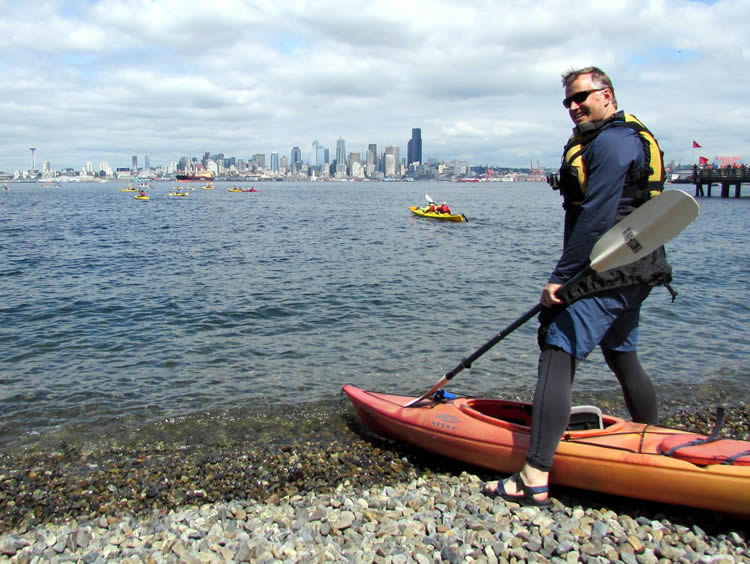
Slaying dragons: Seattle District 6 Councilmember Mike O’Brien gets ready for the Paddle in Seattle. Photo: KUOW
In mid-October, O’Brien, after consulting with the ACLU, introduced an ordinance that would have allowed homeless people to camp in parks and public spaces indefinitely. Dubbed “pitch-a-tent” by critics, the bill failed to gain the Council’s approval. However, it has since been implemented de facto in O’Brien’s District 6, where hundreds of squatters – some of them surly, many of them actively psychotic – live under bridges, in parks, and along sidewalks, unmolested by the police. When residents contact SPD with complaints, the response they hear is: We’re sorry but our hands are tied [by CM O’Brien and the ACLU].
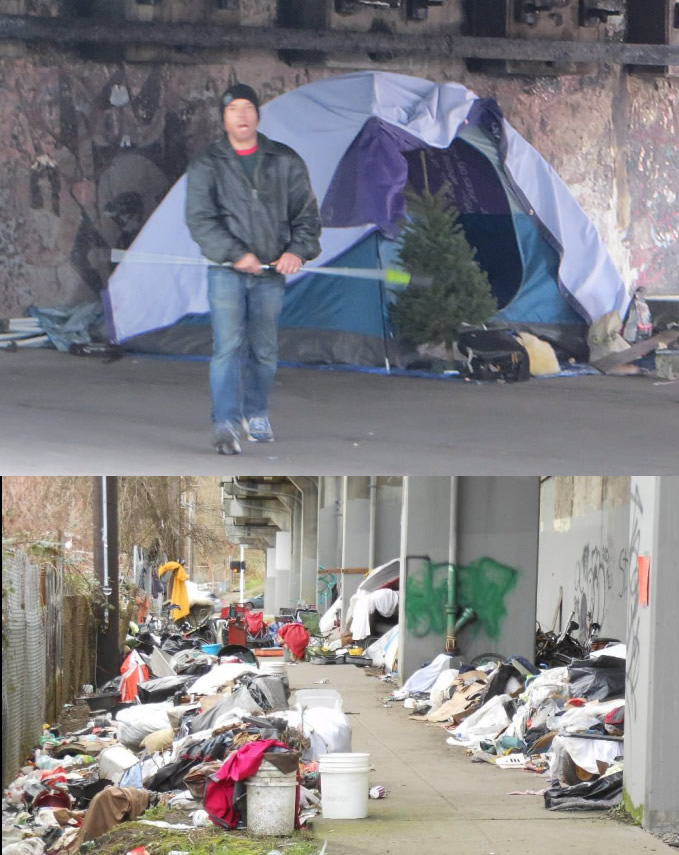
Top photo shows a man who has been living under the Ballard Bridge and may have been involved in a fire there. Police reports have been filed on the man for threatening passersby. Bottom shows trash from people living under the Magnolia Bridge a mile to the south. [Photos: David Preston / City of Seattle]
O’Brien has broad support in the district for his environmental activism. And he knows it. However, he might have sensed that people were not up to speed with him on his social policy proposals. He held two community meetings over the summer – called “Safe and Healthy Communities” forums – apparently to persuade his constituents to get on board with him. Property crime was supposed to be one of the headline issues, but, as it turned out, the meetings were largely devoted to homelessness and addiction. People who attended told me that crime was downplayed, and, to the extent it was even mentioned, people were discouraged from associating the increasing crime rate with homeless people or drug addicts. This story is about how Councilmember O’Brien set these meetings up such that they would either give him the mandate he wanted for his radical policies or, failing that, would give him the cover he needed to plausibly claim that his constituents were behind him.
A Bright and Shining Lie
On his blog last summer, O’Brien posted a piece entitled “Do No Harm and Do the Most Good” wherein he outlines his view that homelessness and addiction are social problems rather than crimes. That view has some merit, but people who espouse it often make optimistic assumptions about homeless and drug addicted people. For example, they hold that addicts are self-directed and will decide to get clean if only they can only get into stable housing. (What evidence is there for that theory? I haven’t seen any.) The Do No Harm school also seems to hold that the problems attendant on homelessness (property damage, trash) don’t constitute harm of a kind that needs to be factored into the calculus. Instead of pushing for more law enforcement or drug courts to deal with addiction, O’Brien wants safe injection sites and catch-and-release type diversions; instead of compelling people on the street to get into a shelter or get psychiatric help, O’Brien thinks they should be allowed to live indefinitely in public spaces, or to live out of their cars, getting treatment and other help only if and when they choose to.
In his post, O’Brien recaps the first of his two Safe and Healthy Community meetings, characterizing the response as positive:
On July 27, in what felt like one of our warmest evenings of the summer, I joined almost 200 neighbors and community members in Ballard to have a conversation about the issues I’ve been hearing most about in recent months – homelessness, property crime, and drug addiction. The Safe and Healthy Communities Public Forum was an opportunity for community to come together to give feedback on solutions to these challenges from a public health and public safety perspective.
He goes on to discuss how he “framed the discussion” :
Before breaking up into small group table discussions, the event kicked off with Assistant Chief Steve Wilske from the Seattle Police Department, Alison Eisinger, Executive Director of the Seattle King County Coalition on Homelessness, and Lisa Daugaard of the Public Defender Association. These speakers helped us to frame the discussion and challenged us to find solutions that would “do no harm”, as Lisa Daugaard stated, and “do the most good,” as Alison Eisinger described.
It so happens that two of the three discussion framers, Alison Eisinger and Lisa Daugaard, are closely associated with the “solutions” that O’Brien said the community members endorsed. Daugaard created an experimental program called LEAD (Law Enforcement Assistance and Diversion) that offers heroin and crack users a shield from arrest while they make up their mind about whether they want to get treatment. Eisinger is the director of a group that has been advocating an end to the removal of illegal encampments from city parks and other public spaces.
There were other discussion framers present at the meeting. I’ll get to them in a bit.
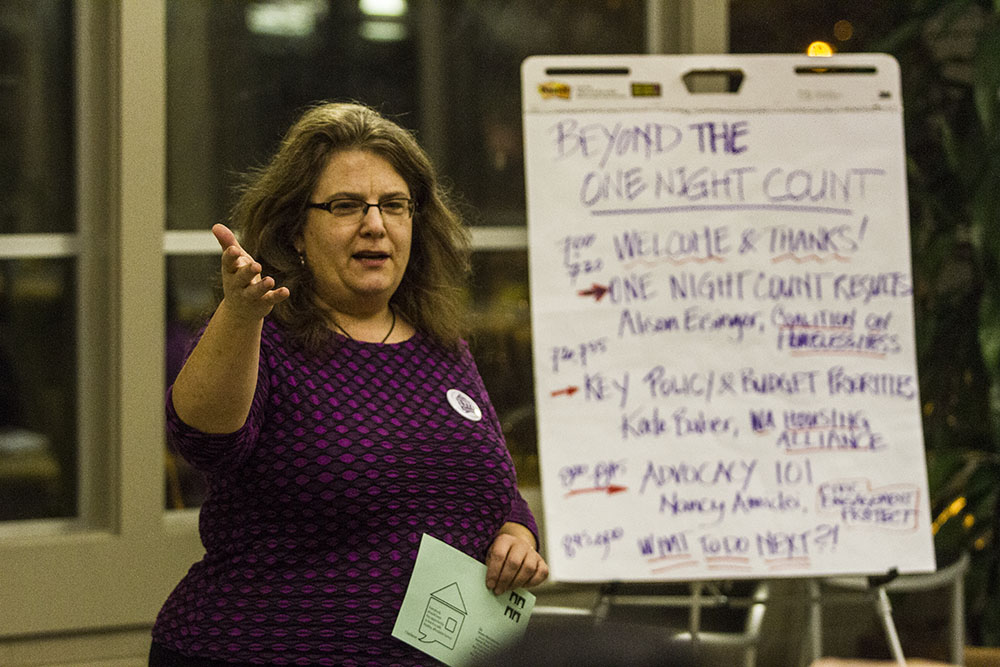
Alison Eisinger leads the Seattle-King Co. Coalition on Homelessness, an advocacy group that pushes for relaxed law enforcement and more government spending on tent camps. She helps CM Mike O’Brien “frame the discussion” on homelessness. Photo: Andrew Haskell/THE FALCON [Click to enlarge]
The vast majority of comments that I heard from the tables underscores a basic truth: everyone needs support at different moments of their life – and that support happens through different methods, including family, friends, faith-based organizations, and government and community resources. Many people suggested that providing that support, and meeting the needs of the most vulnerable, will actually increase the health and safety of all of our communities.
However, when I talked to someone who was there, a woman I’ll call Shirley, I got a very different impression of how the meeting came off:
I know many people who attended [the July meeting] and were very disappointed by the approach. The outcomes were assumed from the start and they were very tightly managed to assure it. Mike states as his mission online that he wants to bring “open and collaborative, value-driven leadership” to the city council level and throughout the city. His sense of these terms is different from many of his constituents, I guess.

Shirley told me that O’Brien was glossing over the impact of his policies, that crime and street people had increased in the district, in spite of his assurances that they wouldn’t:
It felt very disingenuous to have speakers solely focused on crime and homelessness when less than a year prior [O’Brien] was insisting that bringing additional homeless services to the neighborhood wouldn’t cause any issues with crime. “Can’t equate crime with poverty” … “don’t’ criminalize homelessness” … lots of other language like that when the urban rest stop and tent camp were being planned/implemented in Ballard, but never a mention of the opiate epidemic or percentage of homeless with severe substance abuse and/or mental illness and the impacts that brings to a community, especially without proper community policing or social service resources.
Attendees were discouraged from challenging O’Brien’s worldview, Shirley said. People who had concerns about his direction or wanted to offer alternative suggestions were characterized as NIMBYs:
Ballard has always been a live and let live kind of place, so it was bizarre to see my neighborhood skewered as anti-homeless — he really polarized any productive questions, squelching any pragmatic dialogue. People weren’t scared of or trying to prevent solutions for our local homeless; many were worried about things like the Belltown/Jungle/U-district crowd moving here and that’s exactly what happened.

Lisa Daugaard created an experimental “diversion” program to keep drug users on the streets while they decide if they want treatment. Photo: Crosscut
O’Brien held his second Safe and Health Communities forum on September 29. A man whom I’ll call Larry went to that meeting and told me about an interesting thing that happened. As the meeting was getting started, O’Brien’s aides handed out what were supposed to be discussion guides, but then they abruptly stopped, said there’d been a mistake, and asked people to give them back. Larry tucked his into a folder and kept it, and when he read it at home that night, he understood why it wasn’t meant for public consumption. The document was a step-by-step guide on how the facilitators were supposed to deflect dissonant comments, rephrase people’s ideas, and generally guide the discussion into channels that Councilmember O’Brien approved of.
Read the Facilitator’s Guide here
On pages 3 to 5 of the Guide, facilitators are instructed to remind people that any solutions they propose to public safety issues in District 6 must conform to the “Do No Harm” principle. Considerations of obeying/enforcing the law are not to be entertained:
If that doesn’t do the trick, there are specific things they can do to control the discussion:
*If the conversation immediately goes towards arresting people or criminalizing homeless people, simply acknowledge the answer, say okay, and reframe “If we were to apply the ‘reflection toolkit’ to that solution, what would those results actually look like?” [ . . . ]
*If the proposed encampment removal process dominates the conversation, remember to refer to the information included in the Homeless Encampments Legislation, and attempt to reframe and ask if there are other solutions or ideas people wish to discuss.
If the reframing fails catastrophically, ask ’em to step outside:
*If there is an individual or multiple people who are problematically dominating the conversation, please grab Jesse [Perrin’s] attention and he will help address the situation by offering to speak to the person outside.
Note O’Brien’s objection to community members dominating the conversation. (!)
On page 5 of the Guide we find this:
So it would seem that the concept of individual responsibility, which is the basis of our democratic tradition, is now a “challenging world view.”
The Facilitator’s Guide has two pages’ worth of examples of how the facilitators can counter various “myths” about homelessness. Here’s a typical exercise:
The claim that homeless people as a class are less likely to perpetrate violent crime might be true. However, that comes as small comfort to District 6 residents who live near the north end of Ballard Bridge, where homeless drug addicts, untreated psychotics, and plain old thugs have carved out a permanent squatter’s camp. (See a video I produced on that situation here.) It will also be cold comfort to anyone worried about sex offenders living under the Magnolia Bridge, which is also in O’Brien’s turf. See that story here.
Here’s another reframing how-to:
O’Brien claims that up to 90% of homeless people in King County are from King County. No one can check the accuracy of that figure, of course, because the All Home source O’Brien uses doesn’t make the underlying data public. Depending on how one defines “homeless” this claim could be true; however, even if it is true, one can see how the figure could easily be used to mislead people or squelch their comments. Are 90% of the homeless people in Ballard from Ballard? Are 90% of the people living in the local park from the neighborhood where they’re living? –Doubtful. So why is it even relevant for O’Brien to say that 90% of the total homeless population in the region are from the region? It’s not. But that’s how O’Brien’s kind of persuasion works: an ounce of evidence and a pound of conclusion.
Perhaps the handiest tool in O’Brien’s No Harm toolkit is this term “reframe.” In the common understanding of that word, to reframe an idea means to modify it slightly or add context in a way that adds explanatory value and helps the parties come to an honest agreement. But O’Brien isn’t telling facilitators to reframe things that way. He’s telling them to contradict and nullify people’s views. To make them feel ignorant, or just plain wrong. He’s also explaining to the facilitators how they can reprogram people, how to take the wrong ideas out of their heads and replace them with his right ones.

I asked Larry about his sense of the September 29 meeting and got an answer almost identical to what Shirley told me about the July meeting: Outcomes were assumed, problems were downplayed, people were managed.
Some animals are more equal
After seeing a copy of Facilitator’s Guide, I filed a public disclosure request (PDR) to see else what I could find out about how the Safe and Healthy Communities meeting had been managed. In the PDR response package were dozens of e-mails between O’Brien staffer Jesse Perrin and paid policy advocate groups, who had been sent special invitations to the meeting at O’Brien’s request. (Here is a copy of the invitation.) Bear in mind that most of the people on the TO list don’t even live in O’Brien’s district. If they do live there, it’s a coincidence, because O’Brien is inviting them not for their connection to his district but to his policies. In a word: they’re cheerleaders. And they have every reason to be, since the programs they’re connected with are funded and otherwise supported by the City, with help from Mike O’Brien.
Perrin doesn’t want the advocates to be wallflowers, either. He wants them to turn out other people [read: their members] as well . . . to “ensure our community conversations are productive and meaningful.” [editor’s emphasis]
At the top of one e-mail chain is an exchange between another of O’Brien’s aides, Susie Levy, and a woman named Kelly Rider.
Rider is the “Government Relations and Policy Director” for a Seattle non-profit advocacy group called the Housing Development Consortium. In other words, she’s a lobbyist. And Ms. Levy is laying it on the line for Rider here: The more [District 6] advocates in the room, the better. –But of course, the part about D6 is a misnomer. Rider’s office isn’t located in O’Brien’s district; it’s in downtown Seattle, and presumably the membership is spread out all over King County. There’s nothing in the e-mail about people needing to live in O’Brien’s district in order to attend, so if Rider or anyone else from her group who showed up actually lived in the district, that would have been coincidental.
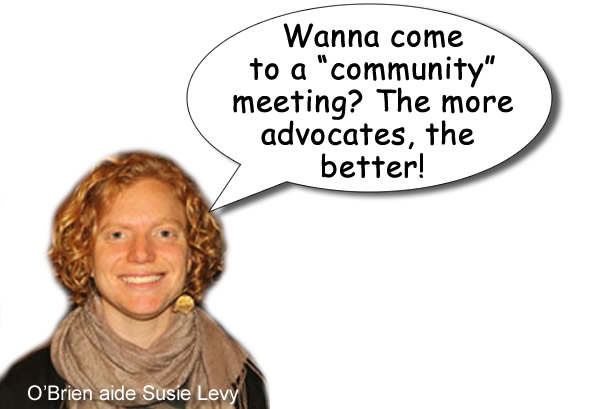
O’Brien could have sent out an e-mail announcing the September 29 meeting through his constituent mailing list, of course. He could have sent a special invite to bona fide community groups, like PTSAs, Block Watch, or the Chamber of Commerce. But he didn’t. Instead, the meeting was announced, sotto voce, on a handful of social media and news sites. Of the attendees I talked to, none had gotten a special invite by O’Brien. They heard about the meeting either through social media or through word of mouth.
A few of the advocates on the invite list I recognized, having seen them around at various public meetings. They are mostly funded either by government and/or by private foundations. These foundations have a social engineering objective, which means that they are dedicated to changing people’s behavior, either through moral suasion or legislation.
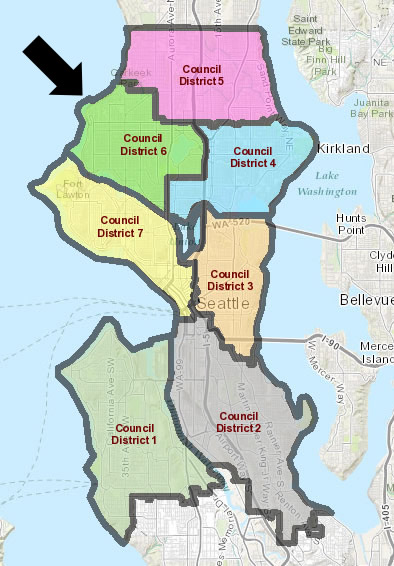
The black arrow shows Mike O’Brien’s northwest Seattle district. O’Brien’s staff sent out invitations to dozens of advocates who supported his policies but had no organic connection to the district. Image: Seattle.gov
For a partial list of invitees and their affiliations, go here.
Some of the advocates invited to the September 29 meeting were asked to be facilitators as well. Below is a draft list of those:
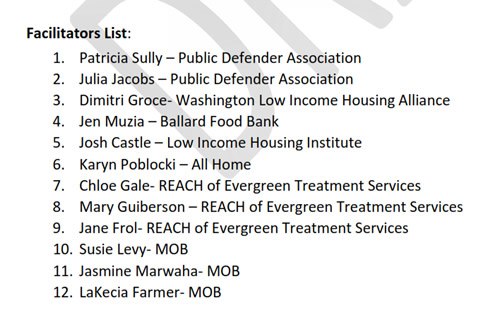
Note: MOB = Mike O’Brien staffer
Note that there is not one facilitator representing small business or other neighborhood groups. With the lone exception of Jen Muzia of the Ballard Food Bank, all the facilitators who don’t work directly for O’Brien are connected with one or more of his controversial policies (law enforcement diversion, sanctioned homeless encampments, homeless camping in parks), which you can quickly verify by doing a Google search on their organizations.
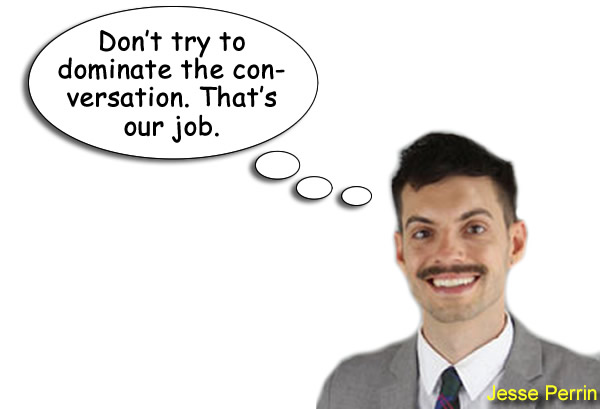
The Unpersuaded
Not all the special invitees responded to the invitation, which is a good thing, because if every group that had got an invitation had sent out a handful of members, as Mr. Perrin asked, there wouldn’t have been any room for actual community members. Still, enough advocates showed up to give the meeting a packed feeling. One attendee, whom I’ll call Andrea, put it this way:
My husband and I attended this as our first District Council Meeting. We arrived early and there were a bunch of tables set up. Lots of people who seemed to be setting up and working, but not a lot of neighbors. As the time to start neared, more people sat down. We identified our names and where we lived generally by cross streets, e.g., NW Market and 24th, and discussed briefly how the neighborhood had changed so dramatically over the past year. One female neighbor living on Market had been assaulted on her way to the bus that very morning. Everyone was very friendly and familiar with the neighborhood and our particular issues.
I’m quoting Andrea at length because her comments describe how the advocates controlled the meeting:
We sat down at an empty table, then saw some boards over to the side where neighbors could leave comments on various issues with Post-its. I did a bunch, probably a dozen stating No to Safe Injection Sites, No to public camping, Yes to rehab/social service outreach, and several other Post-its about needing more law enforcement in the area and clean up of our parks.
.There was a brief intro by Mike O’Brien during which various “table leaders” were sent to be discussion guides. I immediately recognized Jesse Perrin from Mike O’Brien’s office from his picture on the website. We were handed out discussion guides, but none of the points listed for discussion really addressed neighborhood concerns. Even the law enforcement did not address my concern about the need for more police officers. Most of it focused on public toilets, housing, etc. Nothing about neighborhood crime or safety.
O’Brien stated that we were an affluent city and not doing enough to help the homeless. He stated this meeting was to hear from those in the community, so he would just pop around and listen in on conversations. Each table had a topic. During his intro, we had two more additions to our table, one an older woman. The other was a nicely dressed female in her mid-30s who cited laws and decisions, studies, etc.
When the group discussions began on safety issues, homelessness, and supervised injection sites, the two latest additions to our table started interrupting people and talking over them., repeatedly telling us we were “not informed.” Jesse did not stop them, but when someone interrupted one of them, he would say, “Let her speak now.” It became clear very soon after that all three were basically there to tell us why our thoughts were wrong. I looked up younger woman who had a name tag using my smart phone. Ann LoGerfo, it turned out, was an attorney from Columbia Legal Services. The older woman made it clear she lived in Ballard and had been a homeless volunteer and advocate for years. When Ms. LoGerfo advised the group that it was not illegal to set up camp anywhere because of a DOJ decision, I then asked Ms. LoGerfo if she lived in District 6. She said no, but stated she was from the Pioneer Square area and had a right to be there. She did not add that she was with Columbia Legal. I responded that I thought this was a meeting for District 6 neighbors to discuss their concerns.
Jesse didn’t know any areas neighbors discussed, so I asked him if he lived in District 6. He admitted that he did not. The other lady said she was from Ballard and was very angry with me for asking this of people. Everyone else had already mentioned that they were from the neighborhood. When I advised the table that LoGerfo was with the attorneys who had drafted the LEAD ordinance, they were upset, and Jesse really couldn’t do much about that except to insist that she had a right to speak.

Ann LoGerfo is a registered lobbyist and a champion of a “catch and release” diversion program for drug users. She does not live in District 6 but attended the meeting by invitation and spoke as a member of the community. Photo: Columbia Legal Services
Andrea continued:
When the tables broke up, no one really moved around much. I tried to join one other table, but it was full. We then went to a table on Law Enforcement and joined in an active communication. There were two males there. I’m pretty certain one was Yurij Rudensky from Columbia Legal Services and the other may have been from the ACLU. When I suggested more police officers were needed to make first contact and direct homeless people to services they needed, he interrupted me and said it wouldn’t make a difference if there were a thousand more officers. He interrupted two other people within the next few minutes, and my husband and I decided to leave. We were super upset, disgusted, and frustrated.
If O’Brien posts a summary of the second meeting on his blog, he should post the comment cards that actual community members filled out. Including the one below, in which the writer states that he’s not happy with the plan and suggests a different approach. In fact, most comment card writers expressed some level of disapproval for O’Brien’s policies:
Safe [drug] consumption sites. Wait. Create treatment beds and outpatient treatment facilities before you experiment with society. Make housing available for people in early stages of recovery, separate from users.
After I looked through all the PDR materials, I got back to O’Brien’s aide Jesse Perrin and asked him why he had invited so many advocates to a so-called community meeting. Here’s what he said:
The invites included in the attachments to your email were aimed at increasing outreach. With some experience in community organizing, the way to do turn out effectively is to delegate outreach by engaging with people who have community relationships.
He went on to explain that some of the people he’d invited were trained facilitators. And that was true: there were a couple people on his list who had facilitator experience. That was maybe two . . . out of two dozen. I asked Perrin specifically about a man named Josh Castle, who was asked to facilitate at the September 29th meeting. Castle is an employee of the Low Income Housing Institute (LIHI), which operates four sanctioned homeless encampments in Seattle, two of which are in District 6. (Castle’s boss at LIHI, Sharon Lee, is a registered lobbyist. You can see a story another TBQ article on Lee here.)
LIHI is a multi-million dollar enterprise and is already well represented at City Hall. A typical month’s sign-in log shows several meetings between LIHI representatives and councilmembers. (This sheet shows different LIHI people meeting with different CMs twice in a single day.) So why was LIHI tapped to provide a facilitator for the September meeting? According to Perrin, there’s a perfectly logical explanation:
For the LIHI question, [Perrin told me] yes LIHI does participate in advocacy and has been provided contracts for managing the City’s sanctioned encampments. Josh Castle is an employee with LIHI. He also lives in the Greenwood neighborhood, which qualifies him as a community member and District 6 resident. In addition, my facilitator request to him was also based on previous times I worked with him when he facilitated conversations and meetings. Also part of his role at LIHI is doing work in Ballard at the City-sanctioned encampment, the Urban Rest Stop, and with local businesses and neighbors.
Somehow I don’t find any of that reassuring.
What about Mr. Perrin himself? He was the emcee at the September meeting. How would he help community members frame their discussion? A glance at his Facebook page should give us an idea . . .
“Disarm cops. Arm feminists.” Is that a satiric message? I don’t know about the arming feminists part, but it’s a fair bet that Perrin really means the part about disarming cops. Let’s put that statement in the context of Andrea’s comments about wanting more police:
When I suggested more police officers were needed to make first contact and direct homeless people to services they needed [the advocate] interrupted me and said it wouldn’t make a difference if there were a thousand more officers.
Below we see Perrin with a message supporting safe consumption sites, which is another name for for safe injection sites. Or drug-taking sites, depending on how you want to spin it:
Judging by the comment cards and the feedback I got from people who had been at the meeting, most District 6 residents are not in favor of drug-taking sites. But Perrin and O’Brien clearly are. And that’s what matters
Here’s Perrin again, disparagingly his homeland (“the dirty South”) and telling his readers that it’s time to “challenge capitalism.” I’m sure the Ballard Chamber of Commerce would be interested to hear more about that. Perhaps another “community meeting” should be arranged so local businesses could learn how they might “do no harm.”
Here’s an excerpt from a resume that Perrin provided to the Capitol Hill Blog when he was running for a community council seat there in June 2015:
Jesse is Southern-born and raised and recent transplant to Seattle. Jesse has extensive experience in community organizing and movement building to eradicate inequities facing multi-communities. Soon, he will be graduating with a Masters in Policy and Administration from the School of Social Work with recent experience working in the Seattle Mayor’s policy shop.
It would be fair, I think, to characterize Perrin as a social justice warrior. Or an ideologue at the least. While there is nothing wrong with taking a stand on issues, one needs to step back from ideology if one is organizing a community discussion that seeks to gather and evaluate feedback from a variety of perspectives. Did Mr. Perrin check his ideology at the door here? Did he create a space in which District 6 constituents of all persuasions would feel free to express their opinions, regardless of whether they gibed with his and O’Brien’s? What do you think?

Who are the Persuaders?
The advocates O’Brien invited to his meetings span the spectrum from eccentric social justice types whose groups consist of little more than a Facebook page to PR smoothies who work for multi-million dollar enterprises. Their influence in Seattle politics can be gauged by two factors: (1) the current ideological climate and (2) the amount of business they do with the city. Of these, the second is by more important, but for now let’s get down to cases and look at some of the people who were asked to either speak or facilitate at one of O’Brien’s meetings: Alison Eisinger, Lisa Daugaard, and Josh Castle.
Alison Eisinger heads a group called the Seattle King County Coalition on Homelessness. Though you’d think this is a large outfit (it’s a coalition, right?) it’s actually a storefront with Eisinger and two other PR-type people who do little beyond getting themselves on task forces and speaking at government hearings. The group does not evaluate different approaches to homelessness or offer any evidence-based research of its own, nor does it find people housing. You can think of it as an echo chamber that reflects back to O’Brien and other elected officials what they say in public and wish to hear confirmed by people with professional sounding titles. And Eisinger provides. If the City Council is currently liking shelter programs, Eisinger’s right there with her flip chart, touting shelter programs on the public hearing circuit. If they’re liking tent camps instead, she can talk those up as well. Given this, one can easily see how Eisinger fits into O’Brien’s plans for District 6.
Lisa Daugaard created an innovative program to cut recidivism (i.e., trips to jail) for certain classes of non-violent drug offenders. The LEAD program allows cops to gently steer drug addicts toward services and treatment programs rather than jail on the theory that the addicts will be more likely to get with the program (and get off drugs) when they’re not being hassled by cops and judges. LEAD is not the same thing as O’Brien’s “safe injection sites,” but the concepts dovetail nicely, along with camping in parks, under the “do no harm” umbrella. Daugaard is a sincere and intelligent person, but her program is being oversold in Seattle and, increasingly, across the country. Her role is more principled than Eisenger’s, certainly. But in a sense she, too, is just telling O’Brien what he already believes. And what he wants his constituents to believe as well.
Josh Castle works for LIHI in a public relations capacity. He might have been at the meeting as a persuader, or he might have been there to snoop around and get a sense of what neighbors were saying about his tent camps. Although Castle’s public profile is the lowest of the three people in this group, his influence on City policy – or rather LIHI’s influence – dwarfs that of the others, because it derives not from public presentations but rather from the billions of dollars (yes, billions) in real estate that is controlled by the group and its allies, and by its structural influence at all levels of government. LIHI was co-founded by Washington Speaker of the House Frank Chopp, who still controls the group indirectly, along with a handful of other behind-the-scenes actors.* LIHI has close a association with billionaire Paul Allen. If you look at City Council sign-in sheets, you’ll see regular visits from people like Pearl Leung, who represents both LIHI and Allen’s Vulcan development company in their dealings with the City. And these are just the visits we know about:
Digging Deeper
Allen controls so much Seattle property that the city could be called Allentown. He’s behind the massive South Lake Union redevelopment, for example, and owns several newer landmark buildings around downtown, with more being built all the time. And these shiny megaliths are being erected even as public housing units in the area are being torn down and redeveloped as condos by . . . guess who. Meanwhile, in Ballard, residents are being told by CM O’Brien to suck it up while “sanctioned” tent camps are put up in their neighborhoods – on city property and at taxpayer expense – by Vulcan’s non-profit LIHI partner.
If O’Brien wants to keep his job, he needs to do as much as he can for Allen and other big shots, while keeping the public from looking too closely at what they’re doing. And that’s where the hidden persuasion comes in again. If O’Brien can convince his constituents and the media that there’s a permanent crisis of homelessness and addiction – or at least give the appearance of convincing them – he will not just create a useful distraction from what Allen and the others are doing but will also create new opportunities for them to profit, by placing large chunks of public land and money under their control.

Josh Castle works for a non-profit housing group runs tent camps and does deals with real estate tycoons at the same time. O’Brien tapped him to help “reframe” constituents’ ideas about homelessness.
Readers can disagree with my interpretation of O’Brien’s motives. What is undeniable is that he packed a community meeting with people from outside the community. He held the meeting not to listen to what his constituents had to say, as he claimed, but to bring them around to his point of view. Or, failing that, to make it appear, at least, that the people were with him, so he could move forward with his program. In the long run, it is perhaps not so important just why O’Brien has been packing meetings as that he has been packing them. Whatever the reason, he needs to stop.
A New Birth of Freedom
Advocacy groups have a right to exist, of course. At their best, they are a legitimate expression of popular opinion, and they should be given a place at the table accordingly. But they should never be allowed to shove aside individual citizens. If anything, advocates should be seated last at the table, because of their penchant for gluttony. Here are some simple steps O’Brien and the other politicians can take to keep the influence of advocates at bay if he chooses to:
- Equal Time: For every private meeting a councilmember (CM) has with an advocate, they should have one with an ordinary citizen or group that will argue an opposing or alternative position. This should apply to public meetings as well.
. - Full Disclosure: If a CM holds a public meeting, the participation of advocates should be publicly known and strictly limited. Advocates should be few in number and should be clearly identified as advocates at the beginning of the meeting. It should be disclosed who funds them, how much money they get, and what their objectives are. This should be carried over into any literature or blog or Facebook post sent out by the CM afterward.
. - Wall of Separation: Advocates should not be moderators or discussion facilitators, even if they do happen to live in the district. They should remove themselves during any activity designed to take the sense of the meeting. CMs should avoid hiring advocates to staff their offices, unless steps are be taken to ensure that any advocate hired can maintain their neutrality in performing the job. An aide’s first loyalty should be to district residents, not to their personal ideology or interest group.
. . . and NEVER should an advocate be allowed to shush a citizen.
As a final bit of advice for Mr. O’Brien, I offer this: If he wants to lead the people of District 6, instead of just bossing them around, maybe he should quit trying to reframe them and reframe himself instead.
By David Preston, with contributions from the Safe Seattle Research Team




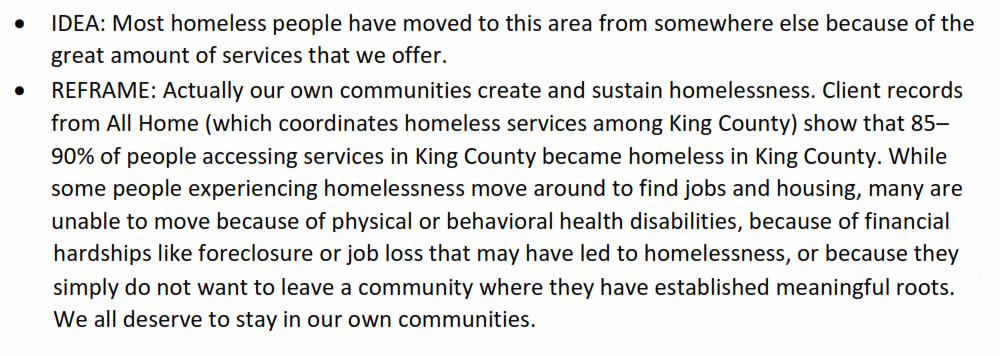
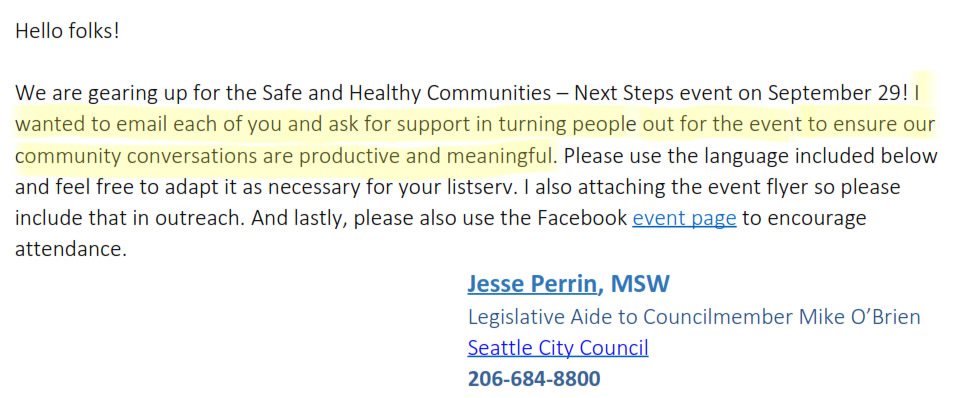

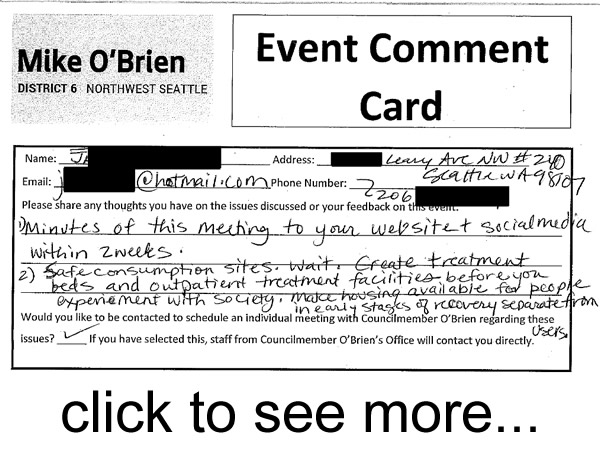
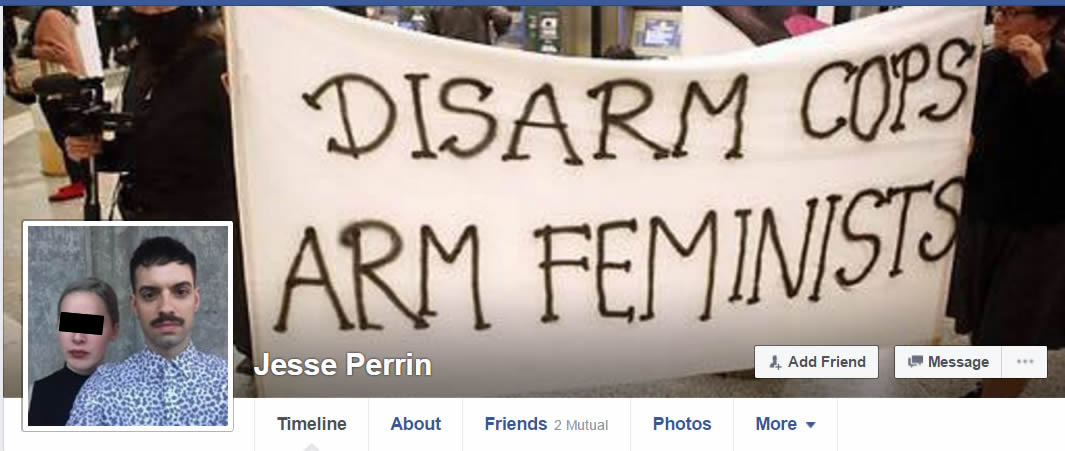
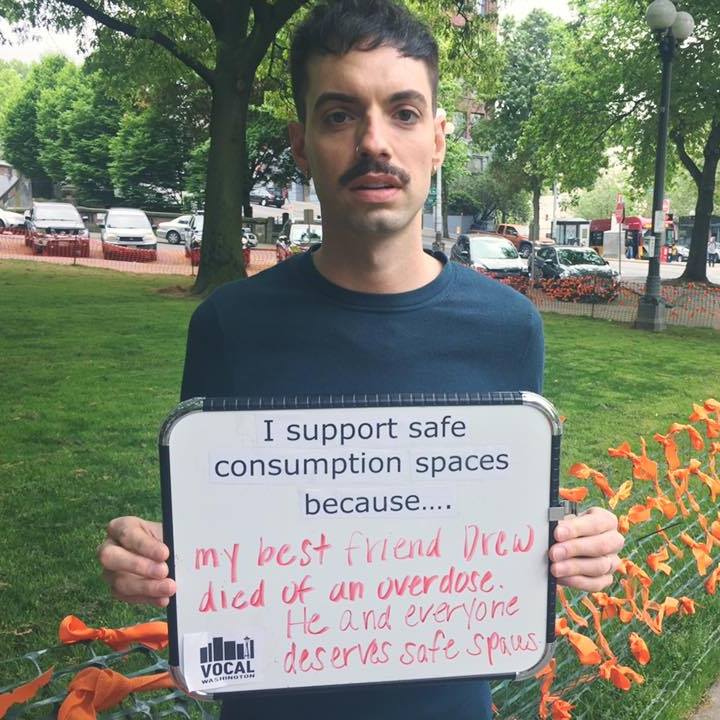



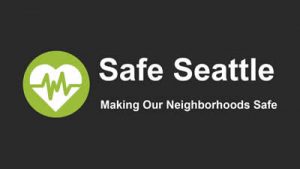




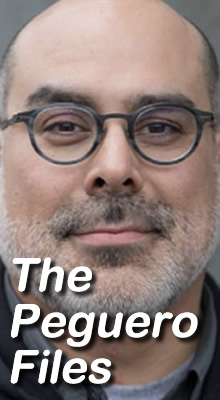
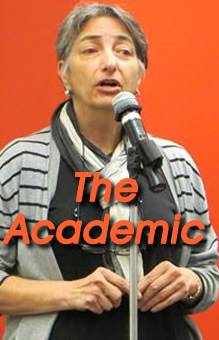
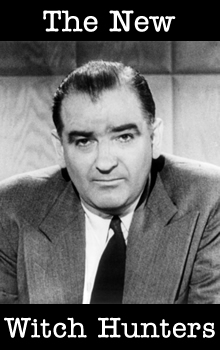



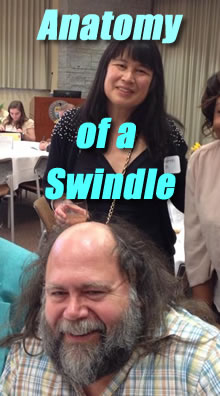
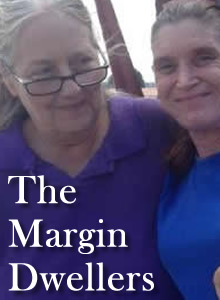




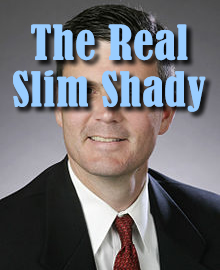


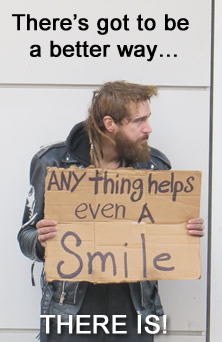
Oops. Magnolia Bridge photo at topish of post says it is in MOB’s district – It’s not. It’s in Sally Bagshaw’s which is only marginally better.
As far as Democracy in name only (DINO) city meetings, these have been going on for a long time. There needs to be a way for citizens whose only axe to grind is their local interest because of where they live or because they use Parks as examples. All others are not welcome and should be GONE! How about being a little more progressive (rather than passive/aggressive) and ask attendees what their reason for being at a mtg is; i.e., do they live in District 6? And if they don’t call them out and keep calling them out until they leave. I think a little East Coast transfusion would help lots.
I was at the July meeting and find this report factual and right on the money. I left feeling nauseated. I don’t like attempts to use and manipulate constituents.
I think it’s time Seattle Voters organized, took their power back and voted the Mayor out of office. Following that, organized efforts should be made to demand and force our city and SPD to address the citizen’s need for safety. And to stop MOB and this insane drive to populate the Northend and other areas with tents & squatters with no support or outreach/treatment options.
Thanks, I’ll fix that.
Here’s another comment from someone who attended the September 29, meeting (sent to me privately):
I distinctly remember Jesse Perrin coming to our table to warn a guy who spoke out against Mike O’Brien calling the housing need “affordable.” When O’Brien said “affordable” the guy yelled out “low income.”
People did become intimidated by Perrin. You’re right; there were more invited advocates then Ballardians! They were rebuked at the tables and I could see steam rising from their ears! People need to boycott the meetings since the only purpose is to be bullied!
I was also on hand for the September 29th meeting. I, too, wondered what LoGefo (Columbia Legal) was doing at a D6 community meeting. During the first small group meeting, the comments from the community members present went off the card/script and were heavily focused on the homeless problems in Ballard. But the “facilitator” never captured any of those comments. Only those things mentioned that were in keeping with the pre-identified solutions in the handout material were recorded. Was a total sham. After it became so obvious that this was just MOB going through the motions of wanted to “hear from the community”, decided not to waste my time with the second small group meeting. Was just going to be more of the same.